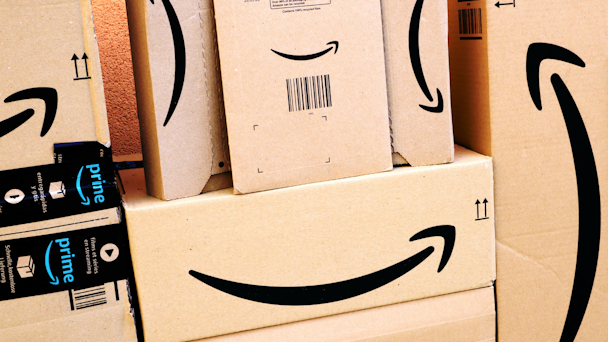Amazon Prime Day 2024 to hit record-shattering $14bn in US sales – but growth is slowing
Despite record growth expected this Prime Day, Amazon’s share of all online purchases made during the annual event is decreasing as a growing number of retailers ride the commerce giant’s coattails with similar summer sales events.

Amazon Prime Day 2024 is set to pull in a historic high of $15bn in US sales / Adobe Stock
The two-day 2024 Amazon Prime Day event, which offers Prime members exclusive deals on thousands of products from big brands such as Apple, Dyson, Sony, Clinique and more, is in full swing.
“Prime Day is a celebration of the value we bring to members all year long, and features millions of deals across more than 35 product categories as well as discounts on Amazon devices, quality entertainment, groceries, travel, and more during the event,” said vice-president of Amazon Prime Jamil Ghani, in a company blog post on Tuesday.
The event generally accounts for around 1-2% of the company’s net global sales, according to CFRA Research.
And this year’s event is expected to be the biggest in the e-commerce giant’s history, raking in a historic high of $14bn in online sales for US retailers, up 10.5% from 2023, according to Adobe’s projections, based on retail transaction data.
Explore frequently asked questions
Tuesday, July 16, alone is likely to generate $7.1bn in online sales, according to Adobe, and is expected to be the biggest day for mobile shopping of 2024.
The event was promoted this year with a flashy ad campaign fronted by rapper Megan Thee Stallion, who released a custom song, It’s Prime Day, for the event.
The surefire success of the shopping extravaganza, which has been held now for 10 consecutive years (the inaugural installation of which raked in $900m in sales), is creating something of a halo effect for the broader retail and e-commerce industry. “This year, consumers will benefit from even more competing sales events across more retailers than years before – for example, both Target and Walmart hosted their own sales events last week,” says Sherry Smith, the executive managing director for the Americas at commerce media firm Criteo.
Advertisement
And it’s an especially welcome trend amid high inflation in the US, Europe and markets around the world, she says. “During times of economic distress, sales events like Prime Day, Target Circle Week and Walmart Deal Days are music to the ears of consumers who have had to tighten their purse strings lately.”
“Consumers are ready to spend, and after browsing competing deals, Prime Day will mark one of the last chances before holiday shopping to capitalize on discount opportunities,” she adds.
Top product categories for Prime Day shoppers this year are likely to include electronics, apparel, home goods and furniture, toys and sporting goods, all of which, on the whole, are seeing steeper discounts compared to last year’s event.
“As consumers contend with elevated prices in categories such as groceries, the heavy discounting we have seen this year in e-commerce has been a key driver for demand,“ Vivek Pandya, lead analyst at Adobe Digital Insights, tells The Drum.
Advertisement
Another focus for many shoppers this year will likely be back-to-school shopping, thanks in part to the event’s proximity to the start of the school year. Adobe observed an 80% lift in online back-to-school sales on Amazon in the first week of July, compared with daily sales levels in June.
Plus, ”new deals will continue to drop as often as every five minutes during select periods throughout the event,” a company spokesperson told The Drum – a fact that could spur additional influxes of sales throughout the 48-hour period.
”Consumers are searching for practical products such as indoor and outdoor furniture, sporting equipment and more – which leads us to predict consumers will focus on personal purchases over early holiday shopping [this Prime Day],” says David Hutchinson, vice-president of marketplaces at digital marketing agency NP Digital. He caveats that this pattern could change if Amazon runs a second Prime event in the second half of the year – something it did last year to compete more handily with Black Friday and Cyber Monday events ahead of the holiday season.
Despite the staggering sales that Prime Day is expected to produce this year, the event’s general growth is slowing. 2024 will be the third consecutive year in which Amazon’s total share of purchases made during the Prime Day event will decrease and the second consecutive year with a slowing year-over-year growth rate, according to a recent report from Emarket. This may be a sign that other retailers are successfully diverting dollars away from Amazon with their own summer sales events.
But for many retailers and brands, Prime Day evidences a broader opportunity: tapping into the growing world of retail media.
The burgeoning space, projected to be worth $150bn in 2026, according to GroupM, “is a way retailers can monetize their data, turning it into a valuable revenue stream, while brands can deploy more targeted advertising campaigns, enhancing their reach and effectiveness.”
Suggested newsletters for you
Competing with Amazon in retail media are giants such as Target, Walmart, Instacart and Kroger, in addition to a growing crop of smaller, more specialized retailers such as Home Depot and Petco.
“If brands have not implemented retail media into their digital advertising strategies, it’s not too late. It will be vital to capitalize on upcoming back-to-school shopping and holiday shopping cycles,” Smith says.
And for retailers, it’s events such as Prime Day that underscore “the importance of making the shopping experience as easy and flexible as possible,“ Adobe Digital Insights’ Pandya says. Mobile shopping features and flexible payment options like ’buy now, pay later’ become crucial in an era when consumers expect seamless, instant commerce experiences.
2024 has already been a historic year for e-commerce. From January 1 to June 30 of this year, consumers have spent nearly $503bn online, representing a 7.4% increase from last year. And largely, growth has been a response to high demand rather than inflated prices, according to Adobe’s research, which recorded a 4.2% year-over-year dip in e-commerce prices as of June 2024.
For more, sign up for The Drum’s daily newsletter here.
